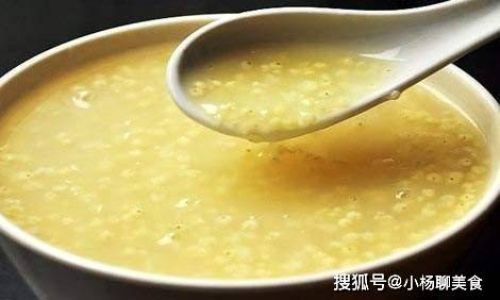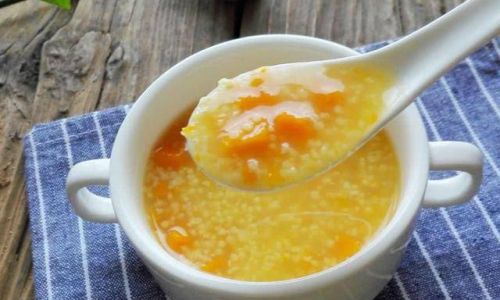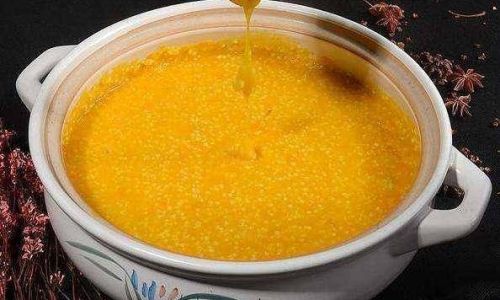Cooking a perfect bowl of millet porridge is an art that combines simplicity with patience. Millet, also known as foxtail millet or hulless millet, is a gluten-free grain that has been a staple in many Asian diets for centuries. Its nutty flavor and creamy texture make it an ideal choice for a comforting breakfast or a light dinner. While the process may seem straightforward, mastering the art of cooking millet porridge requires attention to detail and an understanding of the grain’s unique properties. In this comprehensive guide, we’ll walk you through every step of the process, from selecting the right millet to achieving the perfect consistency.
Understanding Millet: The Basics
Before diving into the recipe, it’s essential to understand what millet is and why it’s a great choice for porridge. Millet is a small, round grain that belongs to the grass family. It’s highly nutritious, packed with essential vitamins and minerals such as magnesium, phosphorus, and B vitamins. Unlike other grains, millet is naturally gluten-free, making it a suitable option for those with gluten sensitivities or celiac disease.
Millet has a slightly nutty and earthy flavor that becomes more pronounced when cooked. Its texture can vary from fluffy to creamy depending on the cooking method and the ratio of water to millet. When cooked properly, millet porridge should have a smooth, velvety consistency with a hint of nutty sweetness.
Selecting the Right Millet
The first step in making a perfect millet porridge is choosing the right type of millet. There are several varieties available, but the most commonly used for porridge is hulless millet or foxtail millet. Hulless millet is preferred because it doesn’t require hulling, which means it retains more nutrients and has a smoother texture when cooked.
When buying millet, look for grains that are uniform in size and color. Avoid any that appear discolored, moldy, or have an off odor. Store-bought millet usually comes in sealed packages, which helps preserve its freshness. Once opened, store it in an airtight container in a cool, dry place to prevent it from going stale.

Preparing the Millet: A Step-by-Step Guide
Now that you have the right millet, let’s move on to the preparation process. Cooking millet porridge involves several key steps, each of which contributes to the final texture and flavor.
-
Rinsing the Millet:
Begin by rinsing the millet under cold running water. This helps remove any dirt, dust, or debris that may be present. Use a fine-mesh strainer to drain the water and repeat the rinsing process until the water runs clear. Rinsing also helps to soften the grains slightly, making them more susceptible to absorbing water during cooking. -
Soaking (Optional but Recommended):
Soaking the millet for a few hours or overnight can enhance its digestibility and improve its overall texture. To soak, place the rinsed millet in a bowl and cover it with water. Let it sit at room temperature for about 4-6 hours or refrigerate it overnight. After soaking, drain the water and rinse the millet once more before cooking. -
Choosing the Cooking Liquid:
Water is the most straightforward choice for cooking millet porridge, but you can also use milk, broth, or a combination of these to add extra flavor. If using water, consider adding a pinch of salt to enhance the grain’s natural sweetness. For a richer, creamier porridge, use whole milk, coconut milk, or a dairy-free alternative like oat milk. Vegetable or chicken broth can add depth and complexity to the flavor profile.
-
Bringing It All Together:
Place the rinsed and soaked (if using) millet in a heavy-bottomed pot or saucepan. Add the cooking liquid, ensuring that the liquid-to-millet ratio is about 4:1 for a creamy porridge or 5:1 for a thicker consistency. Adjust this ratio based on your personal preference for porridge thickness. -
Simmering with Care:
Bring the mixture to a boil over medium-high heat, stirring occasionally to prevent sticking. Once boiling, reduce the heat to low and let it simmer, uncovered, for about 20-25 minutes. Stirring occasionally is crucial during this stage to ensure the porridge cooks evenly and doesn’t stick to the bottom of the pot. -
Checking for Doneness:
After simmering, the millet should be tender and the liquid should have been mostly absorbed. To check for doneness, taste a few grains. They should be soft and slightly chewy, with no crunchy center. If the porridge is too thick, you can add a little more liquid and cook for a few more minutes. Conversely, if it’s too thin, let it simmer uncovered for a bit longer to reduce. -
Finishing Touches:
Once the millet porridge is cooked to your liking, remove it from heat and let it sit for a few minutes. This resting period allows the grains to absorb any remaining liquid and develop a thicker, creamier texture. You can stir in a knob of butter, a drizzle of honey, or a sprinkle of salt and pepper to taste. For added flavor and nutrition, consider incorporating ingredients like chopped nuts, seeds, fresh fruit, or a dollop of yogurt.
Tips for Perfect Millet Porridge
-
Use High-Quality Ingredients:
As with any dish, the quality of your ingredients will directly impact the final result. Use fresh, wholesome ingredients to ensure your millet porridge is both nutritious and delicious. -
Patience is Key:
Cooking millet porridge requires patience. Rushing the process can result in undercooked grains or a porridge that’s too thick or thin. Allow yourself the time to simmer the porridge slowly and stir frequently. -
Experiment with Flavors:
Don’t be afraid to experiment with different flavors and ingredients. Millet porridge is a versatile dish that can be sweetened with honey or maple syrup, savored with herbs and spices, or topped with a variety of toppings. -
Storage and Reheating:
Leftover millet porridge can be stored in an airtight container in the refrigerator for up to 3 days. To reheat, simply place it in a microwave-safe bowl and heat until warm, stirring occasionally to prevent clumping. Alternatively, you can reheat it on the stovetop over low heat, stirring frequently.
-
Customizing for Dietary Needs:
Millet porridge is naturally gluten-free and can be made vegan or dairy-free by using plant-based milk alternatives. It’s also a great option for those following low-carb diets, as millet is lower in carbs than many other grains.
Conclusion
Cooking a perfect bowl of millet porridge is a rewarding experience that combines the simplicity of basic ingredients with the satisfaction of a hearty, nutritious meal. By following the steps outlined in this guide and paying attention to detail, you can create a porridge that’s creamy, flavorful, and perfectly suited to your taste preferences. Whether you’re looking for a comforting breakfast or a satisfying dinner, millet porridge is a versatile dish that’s sure to become a staple in your kitchen. So, gather your ingredients, roll up your sleeves, and start cooking—your taste buds will thank you!




0 comments